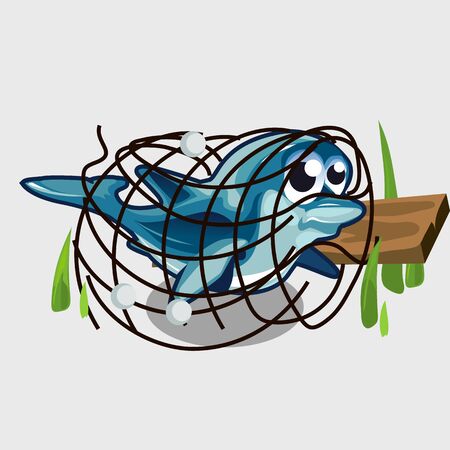Understanding When Medication is Needed
As dedicated fish keepers, it’s natural to worry when one of our aquatic buddies starts acting a little “off.” However, before you reach for the medicine cabinet, it’s important to know when medicating your aquarium fish is truly necessary. Fish can show subtle signs of stress or illness—like clamped fins, changes in color, unusual swimming patterns, or loss of appetite. But not every symptom means your fish needs medication right away. Sometimes, factors like water quality, temperature fluctuations, or bullying from tank mates can cause temporary issues. By carefully observing your fish and testing your water parameters first, you can rule out environmental causes. If symptoms persist or worsen—such as visible spots, open sores, rapid gill movement, or severe lethargy—it may be time to consider treatment. Remember: unnecessary medication can harm beneficial bacteria and stress your whole tank community. Patience and close observation are key to keeping your aquatic pets healthy and happy in your home oasis.
Choosing the Right Medication for Your Fish
Selecting the correct medication is a crucial step in safely and effectively treating your aquarium fish. There are various types of medications available, each designed to target specific ailments and pathogens. Understanding these options will help you make an informed decision that keeps your aquatic friends healthy and happy.
Types of Aquarium Medications
Aquarium medications generally fall into several categories, including antibacterial, antifungal, antiparasitic, and general tonics. The table below highlights some common types and their typical uses:
| Type | Common Uses | Example Medications |
|---|---|---|
| Antibacterial | Bacterial infections (fin rot, ulcers) | Maracyn, Kanaplex |
| Antifungal | Fungal growth (cotton-like patches) | Pimafix, Fungus Cure |
| Antiparasitic | Parasites (Ich, flukes) | CopperSafe, PraziPro |
| General Tonics | Mild symptoms or stress prevention | Aquarium Salt, Melafix |
Matching Medication to Fish Species and Symptoms
Not all fish react the same way to treatments—what works for goldfish might not be safe for shrimp or scaleless species like loaches. Always read medication labels carefully and cross-check with the needs of your specific fish species. Pay close attention to symptoms: white spots may signal Ich (a parasite), while frayed fins often indicate bacterial infections. If you’re unsure, consult a local aquarist or veterinarian familiar with aquatic pets.
Tips for Selecting the Best Treatment:
- Identify the exact symptoms: Observe changes in behavior, appetite, color, or physical appearance.
- Research compatibility: Make sure the medication is safe for all tank inhabitants—including plants and invertebrates.
- Avoid overmedicating: More isn’t always better; use only as directed to prevent harming beneficial bacteria or stressing your fish.
- Quarantine when possible: Treating sick fish in a separate tank helps protect healthy tankmates and makes monitoring easier.
- Consult professionals: When in doubt, seek advice from experienced aquarists or aquatic veterinarians before starting treatment.
Your aquatic buddies rely on you to choose wisely—by understanding the options and knowing your fish’s needs, you’ll keep your home aquarium safe, serene, and full of life!
![]()
3. Prepping Your Aquarium and Quarantine Tanks
Before diving into medicating your fish, it’s crucial to prepare both your main aquarium and a dedicated hospital or quarantine tank. Setting up a separate hospital tank isn’t just extra work—it’s actually the gold standard for keeping your aquatic pets safe and healthy. Why? Because treating fish in a smaller, controlled environment allows you to monitor their progress closely, prevent medication from harming your healthy plants and beneficial bacteria, and keep the rest of your aquarium community safe from any contagious illnesses.
Start by choosing an appropriately sized quarantine tank—usually 5 to 20 gallons, depending on the size and number of fish you need to treat. Make sure it’s clean and free from any soap residue or chemicals. Use aged or conditioned water that matches the temperature, pH, and hardness of your main tank as closely as possible. This helps reduce stress when transferring your fish. You’ll also want to equip the hospital tank with a heater and sponge filter for gentle filtration. Avoid using gravel or decorations that can trap medication or harbor pathogens—keep things simple so cleaning is a breeze.
Don’t forget about your main aquarium! Before starting treatment, remove activated carbon or chemical filtration media from both tanks, since these can absorb medications and render them ineffective. Double-check that all equipment—nets, siphons, buckets—are disinfected between tanks to avoid cross-contamination. By taking these careful steps before administering any meds, you give your finned friends the best shot at recovery while keeping the rest of your aquatic family out of harm’s way.
4. Proper Medication Dosage and Application
Getting the dosage right is one of the most important steps in medicating your aquarium fish safely and effectively. Overdosing can stress or even kill your aquatic pets, while underdosing may not resolve the problem and can even lead to resistant strains of bacteria or parasites. Always read the manufacturer’s label carefully and consult resources specific to your fish species for tailored advice. Here are some guidelines on how to accurately measure medication and ensure safe application:
Measuring Medication Accurately
Most aquarium medications are either in liquid, powder, or tablet form. Use a graduated syringe, dropper, or digital scale (for powders) to get precise measurements. Never estimate by eye—accuracy is crucial.
| Medication Form | Recommended Measuring Tool | Common Dosage Error |
|---|---|---|
| Liquid | Syringe/dropper | Too much or too little per gallon |
| Powder | Digital scale/measuring spoon | Lumping leads to uneven distribution |
| Tablet | Count tablets, break if necessary | Incorrect splitting for smaller tanks |
Following Dosing Instructions
Every product is different, so always follow the package instructions regarding dose per gallon/liter, frequency, and duration. For American aquarists, remember that 1 US gallon equals about 3.785 liters—this conversion matters when treating larger tanks. When in doubt, it’s safer to slightly underdose than overdose. If you’re treating multiple tanks or ponds, double-check each volume before adding medication.
Dosing Tips for Success:
- Calculate Tank Volume Correctly: Subtract space taken up by decorations and substrate for a more accurate water volume.
- Avoid Mixing Medications: Unless directed by a vet or reliable source, mixing treatments can cause chemical reactions harmful to fish.
- Monitor Water Parameters: Some meds affect pH or oxygen levels; use test kits to keep conditions stable during treatment.
- Remove Activated Carbon: Take out carbon filters as they absorb many medications, making treatments ineffective.
- Maintain Good Aeration: Increase air stone output or surface agitation during treatment, since some meds reduce available oxygen.
Safe Application Practices for Your Fish and Tank Environment
Add medication slowly to prevent shocking your fish. Distribute it evenly around the tank rather than dumping it in one spot. Watch your pets closely after dosing—if you notice rapid breathing, erratic swimming, or other stress signs, do a partial water change immediately and seek advice from an experienced aquarist or veterinarian.
A Gentle Reminder:
Your aquarium is an ecosystem! Always medicate with care and patience to protect every member—from the smallest snail to your showpiece koi—and keep your underwater homestead thriving.
5. Monitoring Fish Health During Treatment
Recognizing Key Symptoms
During the course of medicating your aquarium fish, it’s crucial to stay vigilant for both improvements and potential complications. Keep an eye out for primary symptoms such as lethargy, loss of appetite, abnormal swimming patterns, visible spots or lesions, rapid gill movement, or clamped fins. Positive changes—like increased activity and clearer skin—may indicate recovery, while worsening signs could signal that the treatment isn’t working or is causing side effects.
How Often Should You Check Your Fish?
Consistency is key. Check on your fish at least twice a day: once in the morning and again in the evening. This frequent monitoring helps you catch any sudden changes quickly, allowing you to adjust treatment if needed. Make these check-ins a routine part of your daily schedule—maybe while feeding or before turning off tank lights for the night.
Documenting Progress and Side Effects
To track your fish’s response to medication, consider keeping a simple log. Jot down notes about each fish’s behavior, appearance, and appetite every day. If you notice unusual symptoms—like swelling, color changes, or erratic movement—record those as well. Photos can be especially helpful for comparing changes over time. This record not only helps you spot trends but also provides useful information if you need to consult with an aquatic veterinarian.
When to Take Action
If you observe serious side effects such as severe distress, sudden death, or rapid deterioration after starting medication, discontinue use immediately and reach out to a professional for advice. Sometimes, subtle issues like mild discoloration or slight fin fraying may occur and resolve on their own; just make sure to keep documenting these changes and act if they worsen. Remember: early detection of problems gives your fish the best chance at a full recovery.
6. Aftercare and Preventing Future Outbreaks
Post-Treatment Care for Your Fish
Once your fish have completed their medication regimen, it’s time to focus on aftercare. Observe your aquatic buddies closely for any lingering signs of stress or illness. Don’t rush to return them to the main tank if you’ve used a hospital or quarantine setup—give them a few days in clean, well-oxygenated water to recover fully. Keep an eye out for symptoms like lethargy, loss of appetite, or abnormal swimming patterns. Just like our beloved dogs and cats need extra cuddles and monitoring after a trip to the vet, your fish appreciate a little post-medicine TLC too!
Thorough Cleaning & Tank Maintenance
Medication can leave residues that linger in your aquarium, so it’s important to carry out a partial water change (usually about 25-50%) after treatment is complete. Use a gravel vacuum to remove uneaten food, waste, and leftover medicine from the substrate. Clean your filter media gently in old tank water (never tap!) to preserve beneficial bacteria while removing debris. Replace activated carbon or chemical filtration elements if you removed them during treatment—they help absorb any residual meds and keep your water sparkling fresh.
Pro Tip:
If you have plants or delicate invertebrates, double-check that all traces of medication are gone before reintroducing them. Some medications linger longer than others, so reading product labels is always a good habit.
Fostering a Healthy Aquarium Environment
The best way to avoid future outbreaks is by creating a low-stress, well-maintained home for your finned friends. Keep up with regular water changes, test for parameters like ammonia, nitrite, nitrate, pH, and temperature weekly, and make adjustments as needed. Feed high-quality food in appropriate amounts—overfeeding can lead to poor water quality and stressed-out fish! Quarantine new arrivals for at least 2 weeks before adding them to your main display. It’s just like introducing a new puppy to the family: slow and steady keeps everyone safe.
Bonus Tips from Experienced Aquarists
- Add live plants—they help balance water chemistry and give shy fish places to hide.
- Use a UV sterilizer if you’re prone to recurring outbreaks; it helps control free-floating pathogens.
- Keep up with seasonal tank “spring cleaning”—redecorate, trim plants, and check equipment for wear and tear.
With some thoughtful aftercare and preventative steps, you’ll help ensure that your underwater pets stay happy and healthy for years to come—just like any cherished member of your animal-loving household!


